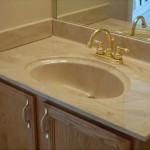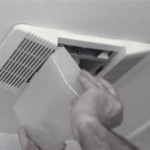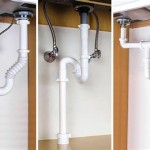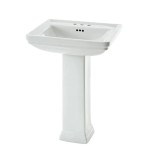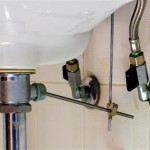How To Treat Damp in a Bathroom
Bathrooms, by their very nature, are prone to dampness. High humidity levels from showering and bathing create a perfect environment for moisture buildup. Left untreated, this damp can lead to various problems, including mold growth, peeling paint, and structural damage. Effectively treating bathroom damp requires a multi-pronged approach, addressing both the causes and the symptoms.
The first step in treating bathroom damp is identifying the source. Damp can arise from several issues, including inadequate ventilation, leaking pipes, and penetrating damp from external walls. A thorough inspection of the bathroom is crucial. Check for visible signs of leaks, such as water stains on ceilings or walls. Examine sealant around baths, showers, and sinks for any gaps or cracks. Investigate external walls for signs of penetrating damp, which may manifest as damp patches or tide marks.
Ventilation plays a vital role in preventing and treating damp. Bathrooms should have adequate ventilation to remove excess moisture. An extractor fan is the most effective solution, ideally one with a humidistat that automatically activates when humidity levels rise. If an extractor fan is not present, ensuring the bathroom window is open during and after showering or bathing can significantly improve ventilation. Leaving the bathroom door ajar after use can also help air circulation.
Leaking pipes are a common cause of damp and require immediate attention. Even small leaks can contribute significantly to moisture buildup over time. If a leak is suspected, a plumber should be contacted to identify and repair the issue. This may involve repairing or replacing damaged pipes or fittings.
Penetrating damp occurs when moisture from outside enters the bathroom through walls or floors. This is more common in older properties and can be more complex to resolve. Addressing penetrating damp requires identifying the source of the moisture ingress and implementing appropriate remedial measures. This may involve repairing damaged pointing, applying a waterproof membrane to external walls, or improving drainage around the property's foundations. Professional advice from a damp proofing specialist is often necessary.
Once the source of the damp has been identified and addressed, attention can turn to treating the existing damage. Affected areas should be thoroughly dried out before any redecoration or repairs are undertaken. This can be achieved by opening windows, using dehumidifiers, or employing professional drying equipment. Mold growth, a common consequence of damp, should be treated with a suitable fungicidal wash. Ensure the area is well-ventilated during and after application.
Dealing with peeling paint requires removing the loose and flaking paint using a scraper. The surface should then be thoroughly cleaned and allowed to dry completely before applying a fresh coat of moisture-resistant paint specifically designed for bathrooms. These paints contain anti-mold properties and offer better resistance to the humid environment.
When renovating or designing a bathroom, preventative measures can be incorporated to minimize the risk of future damp issues. Installing a shower screen or curtain can help contain water spray. Choosing appropriate wall and floor coverings can also make a difference. Tiles are a popular choice due to their water resistance. Ensure they are correctly installed with waterproof grout and sealant to prevent water penetration.
Effective waterproofing around baths, showers, and sinks is crucial. Sealant should be applied carefully and regularly inspected for any signs of deterioration. Replacing old or damaged sealant can prevent water from seeping into walls and floors. Using waterproof tanking membranes in shower areas provides an additional layer of protection against water ingress.
Maintaining a consistent temperature in the bathroom can also help prevent condensation, a major contributor to damp. Keeping the bathroom heated, even when not in use, can minimize temperature fluctuations and reduce the likelihood of condensation forming on cold surfaces.
Regular cleaning and maintenance are essential in preventing damp. Wiping down surfaces after showering or bathing can remove excess moisture. Regularly checking for leaks and inspecting sealant can help identify and address potential problems early on before they escalate into more significant damp issues.
Treating damp in a bathroom requires a comprehensive approach, addressing the underlying causes and implementing appropriate preventative measures. By understanding the sources of damp and taking proactive steps, homeowners can effectively manage moisture levels and maintain a healthy and comfortable bathroom environment.

How To Stop Damp In Bathroom Expert Guide From Timberwise

How To Stop Damp In Bathroom Expert Guide From Timberwise

Dealing With Damp In Bathrooms

How Do I Stop Damp In My Bathroom Envirovent

Dealing With Damp In Bathrooms

How To Deal With Bathroom Condensation Big

Stop Bathroom Condensation Once And For All

How To Get Rid Of Mold In Bathroom 2024 Tips From Puroclean

What Is Rising Damp How To Treat It

My Bathroom Ceiling Has Black Mould Growing On It What Should I Do
Related Posts

